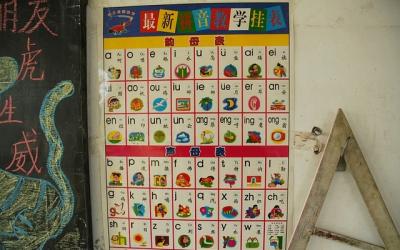SIMBIOSIS BIOLOGÍA-EDUCACIÓN BAJO EL PRISMA DE LA CONTEXTUALIZACIÓN DE CONTENIDOS: EL CASO DEL MAR MENOR
BIOLOGY-EDUCATION SYMBIOSIS UNDER THE PRISM OF THE CONTEXTUALIZATION OF CONTENTS: THE CASE OF THE MAR MENOR
DOI: https://doi.org/10.51896/CCS/LKCS7457
Fecha recibido: 30/09/2021 | Fecha publicado: 10/11/2021 | Fecha corregido: 30/10/2021 |Autores
RESUMEN
El proceso de enseñanza-aprendizaje en Educación Secundaria Obligatoria (ESO) no tiene en cuenta la contextualización de contenidos en Biología y Geología, haciendo que los estudiantes no encuentren motivación por su estudio y presenten dificultades en el proceso de aprendizaje, provocando que éstos, a su vez, no adquieran actitudes en favor de la conservación y protección del medio natural. El presente estudio se enmarca en una clase de 1º de ESO (n=30) de un instituto localizado en el municipio de Murcia, con un nivel socioeconómico medio-alto. Se emplea una propuesta educativa, con una secuencia de actividades (6 sesiones de 15 actividades), en la que se pretende la contextualización de los contenidos relacionados con la dinámica de los ecosistemas. Para ello, se utiliza un ecosistema presente en la Región de Murcia para abordar los contenidos, concretamente, el Mar Menor, sirviendo de hilo conductor de dichas actividades. Con ello, los contenidos se encuentran contextualizados y se intenta promover la concienciación y sensibilización por la conservación y protección del medio ambiente. Para su implementación, se establece una selección de objetivos, relación con las competencias clave, análisis del libro de texto utilizado, diseño de las actividades y establecimiento del método de evaluación. Tras la implementación de la propuesta educativa, la mayoría de estudiantes muestra motivación por el estudio del temario, así como una mayor comprensión del mismo, indicando que la contextualización de los contenidos y uso variado de metodología, estrategias y recursos didácticos es positiva en el proceso de enseñanza-aprendizaje y promoción de actitudes proambientales.
Palabras clave: Biología, Educación, contextualización, ecosistemas, Educación Secundaria Obligatoria, Mar Menor.
BIOLOGY-EDUCATION SYMBIOSIS UNDER THE PRISM OF THE CONTEXTUALIZATION OF CONTENTS: THE CASE OF THE MAR MENOR
ABSTRACT
The teaching-learning process carried out in Secondary Education (ESO) does not take into account the contextualization of contents in Biology and Geology, triggering a lack of motivation in students when studying and having difficulties in the learning process, causing them, in turn, not to acquire attitudes in favor of the conservation and protection of the natural environment. The present study is framed in a class of 1st of ESO (n = 30) of a high school located in the city of Murcia, with a medium-high socioeconomic level. An educational proposal is used, with a sequence of activities (6 sessions of 15 activities), in which the contextualization of the contents related to the dynamics of ecosystems is intended. For this, an ecosystem located in the Region of Murcia is used to address the contents, specifically, the Mar Menor ecosystem, serving as a common thread for these activities. With this, the contents are contextualized and an attempt is made to promote awareness and sensitization for the conservation and protection of the environment. For its implementation, a selection of objectives is established, related to the key competences, the students' textbook is analyzed, the activities are designed and the evaluation method is established. After the implementation of the educational proposal, most of the students show motivation for the study of the ecosystems and their dynamics, as well as a greater understanding of them, indicating that the contextualization of the contents and the varied use of methodology, strategies and didactic resources is positive in the teaching-learning process and promotion of pro-environmental attitudes.
Keywords: Biology, Education, contextualization, ecosystems, Secondary Education, Mar Menor.


